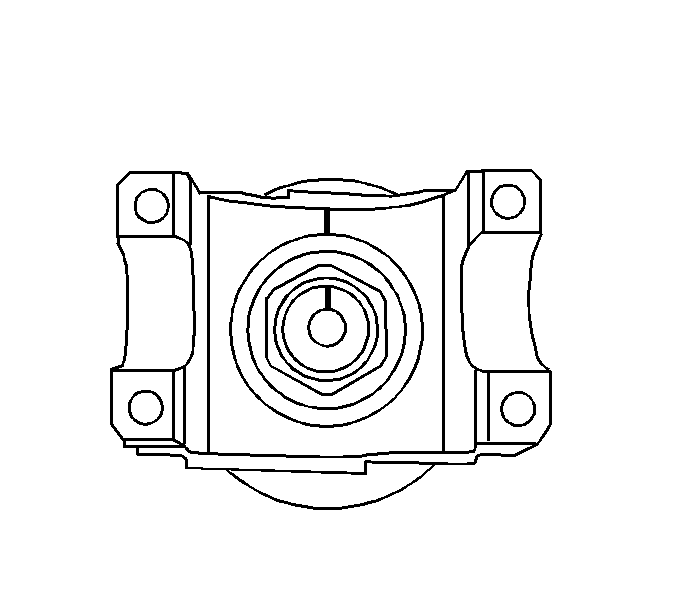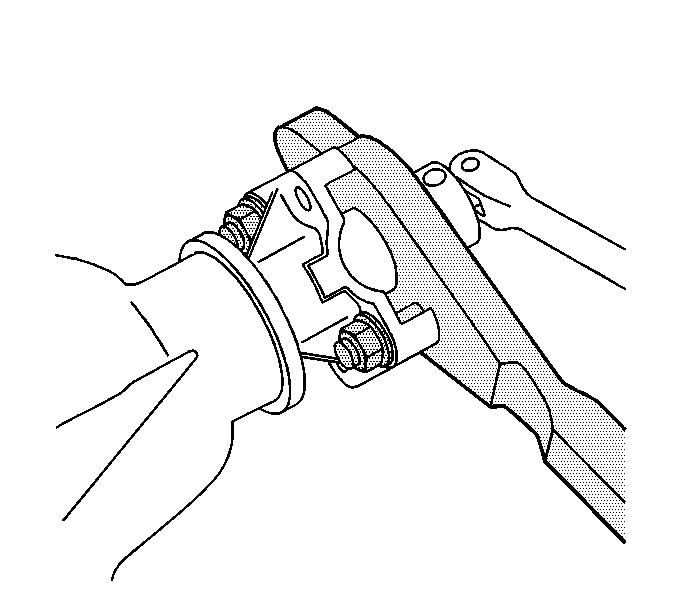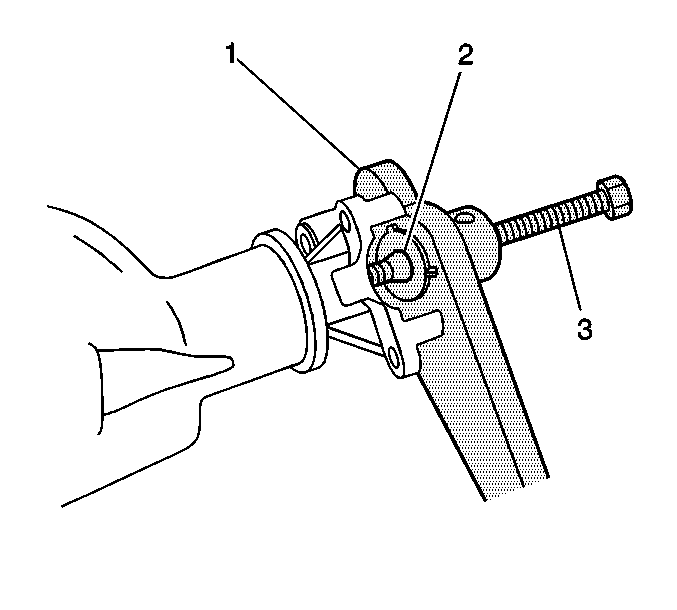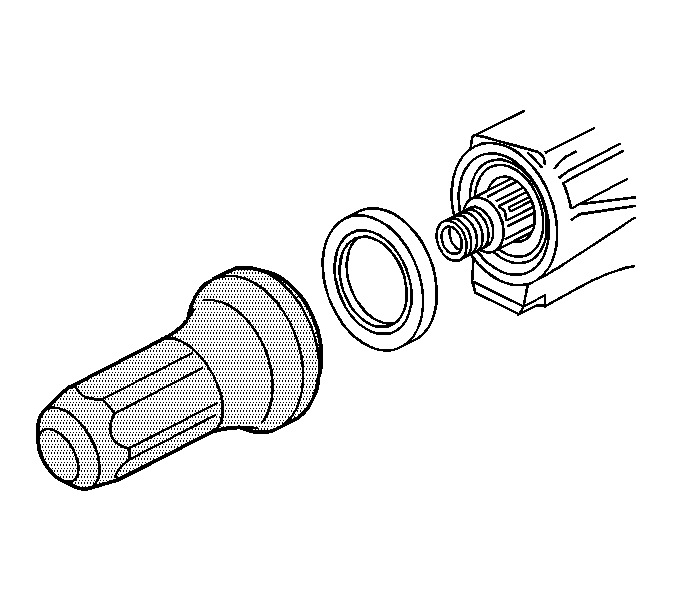Special Tools
| • | J 8614-01 Flange/Pulley Holding Tool |
| • | J 22388 Pinion Oil Seal Installer - Rear |
Removal Procedure
- Raise the vehicle. Refer to Lifting and Jacking the Vehicle.
- Drain the drive axle. Refer to Rear Axle Lubricant Replacement.
- Remove the tire and wheel assemblies. Refer to Tire and Wheel Removal and Installation.
- Remove the brake calipers and rotors. Refer to Rear Brake Rotor Replacement.
- Reference mark the rear propeller shaft (3) to the rear axle pinion yoke (4).
- Disconnect the propeller shaft from the axle.
- Measure the amount of torque required to rotate the pinion. Use an inch-pound torque wrench. Record this measurement for reassembly. This will give the combined preload for the following components:
- Place an alignment mark between the pinion and the pinion yoke.
- Install the J 8614-01 as shown.
- Remove the pinion nut while holding the J 8614-01 .
- Remove the washer.
- Install the J 8614-2 (2) and the J 8614-3 (3) into the J 8614-01 (1) as shown.
- Remove the pinion yoke by turning the J 8614-3 (3) clockwise while holding the J 8614-01 (1).
- Remove the pinion oil seal. Use a suitable seal removal tool. Do not damage the housing.
Note: Observe and mark the positions of all the driveline components, relative to the propeller shaft and the axles, prior to disassembly. These components include the propeller shafts, drive axles, pinion flanges, output shafts, etc. Reassemble all the components in the exact places in which you removed the parts. Follow any specifications, torque values, and any measurements made prior to disassembly.

Wrap the bearing caps with tape in order to prevent the loss of bearing rollers.
Support the propeller shaft as necessary.

| • | The pinion bearings |
| • | The pinion oil seal |
| • | The differential case bearings |
| • | The axle bearings |
| • | The axle seals |



Use a container in order to retrieve the lubricant.
Installation Procedure
- Install a new pinion oil seal using the J 22388 or the J 44414 .
- Apply sealant, GM P/N 12346004 (Canadian P/N 10953480) or equivalent, to the splines of the pinion yoke.
- Install the pinion yoke.
- Seat the pinion yoke onto the pinion shaft by tapping it with a soft-faced hammer until a few pinion shaft threads show through the yoke.
- Install the washer and a new pinion nut.
- Install the J 8614-01 onto the pinion yoke as shown.
- Tighten the pinion nut while holding the J 8614-01 .
- Measure the rotating torque of the pinion. Compare this measurement with the rotating torque recorded during removal.
- Once the specified torque is obtained, rotate the pinion several times to ensure the bearings have seated. Recheck the rotating torque and adjust if necessary.
- Install the propeller shaft (3) to the pinion yoke (4).
- Install the propeller shaft yoke retaining clamps and the bolts.
- Install the brake rotors and calipers. Refer to Rear Brake Rotor Replacement.
- Install the tire and the wheel. Refer to Tire and Wheel Removal and Installation.
- Fill the drive axle. Refer to Rear Axle Lubricant Replacement.
- Inspect and add axle lubricant to the axle housing, if necessary. Refer to Rear Axle Lubricant Level Inspection.
- Lower the vehicle.

Align the marks made during removal.
Caution: Do not hammer the pinion flange/yoke onto the pinion shaft. Pinion components may be damaged if the pinion flange/yoke is hammered onto the pinion shaft.

Caution: Refer to Fastener Caution in the Preface section.
Note: If the rotating torque is exceeded, the pinion will have to be removed and a new collapsible spacer installed.
Tighten
Tighten the nut until the pinion end play is just taken up. Rotate the pinion while tightening the nut to seat the bearings.

Tighten
Tighten the nut in small increments, as needed, until the rotating torque is 0.40-0.57 N·m (3- 5 lb in) greater than the rotating torque recorded during removal.

Align the reference marks made during removal.
Tighten
Tighten the propeller shaft yoke retaining clamp bolts to 25 N·m (18 lb ft).
